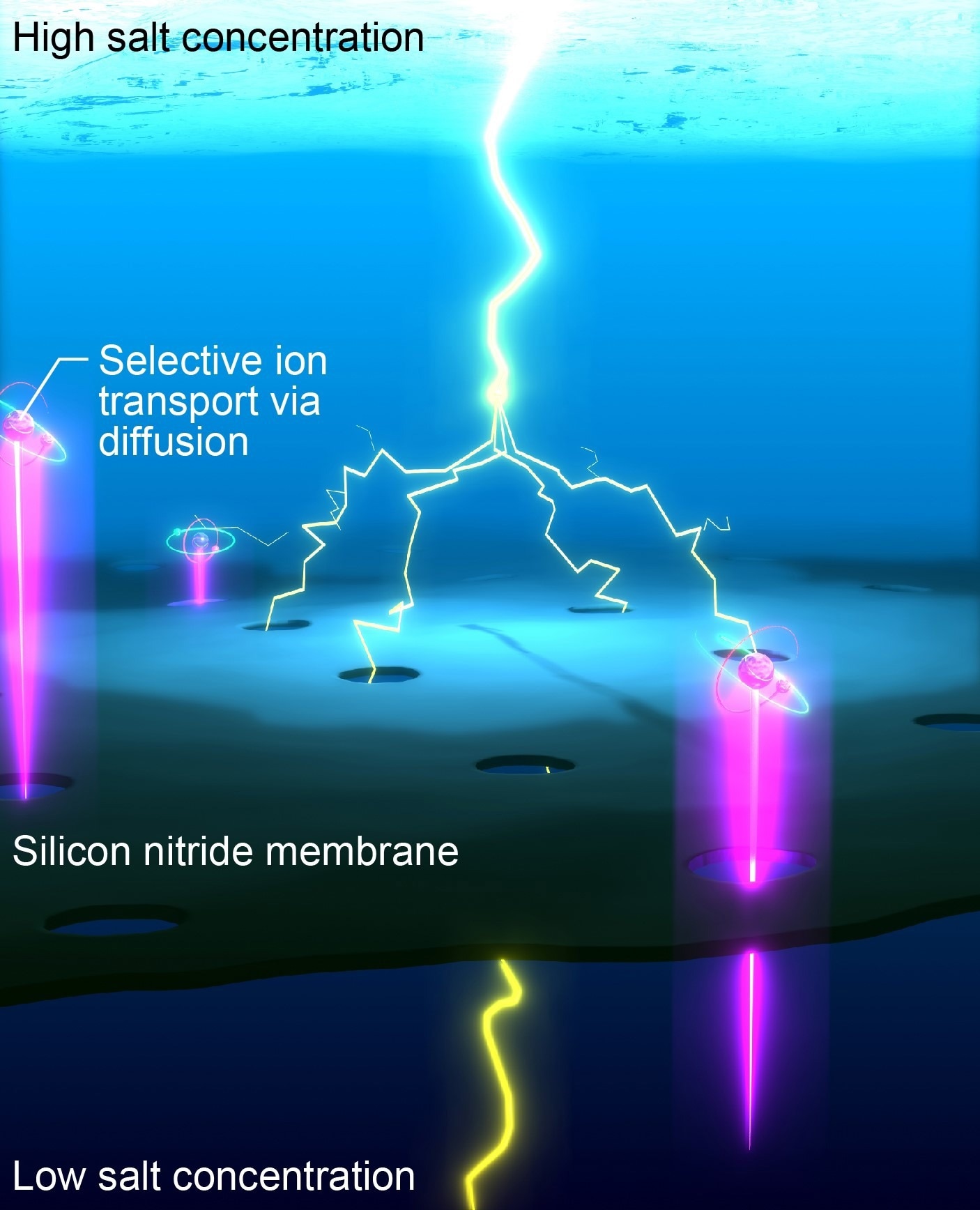Developing renewable energy sources is a top priority for researchers, political leaders, and communities as we tackle the depletion of the Earth’s natural resources. Researchers at Osaka University’s Institute of Scientific and Industrial Research (SANKEN) have proved that electricity may be generated from water with a high salt concentration, like seawater.

Osmotic power generation using size- and position-controlled solid-state multi-nanopores. Image Credit: Makusu Tsutsui.
When there is a concentration disparity between two sides, the spontaneous mobility of dissolved ions or molecules through a semi-permeable membrane can be used to create electricity.
It is fortunate that the oceans contain salty water, which might be utilized to help meet humanity’s increasing energy needs. Any membrane developed to harness this energy must be extremely thin and selective to let ions through but not water molecules.
Recently, a research group headed by Osaka University has used traditional semiconductor processing methods to accurately manipulate the shape and arrangement of nanopores in an ultrathin silicon membrane. The expenditures and design complexity were kept to a minimum. It was possible to carefully adjust the pore's shape and placement.
Whenever there is a non-equilibrium situation, such as two water tanks with different salt concentrations, there is often an opportunity to covert this thermodynamic energy into electricity.
Makusu Tsutsui, Study First Author, Osaka University
The device achieved a maximum power efficiency of 400 kW/m2 with a single 20 nm-sized nanopore. The number of nanopores added to the membrane actually decreased the amount of electricity that could be extracted, the scientists found.
The ideal pore arrangement, consisting of 100 nm-sized nanopores spaced 1 μm apart in a grid, produced an osmotic power density of 100 W/m2. This was a crucial step in learning how to create nanopore devices that generate the most electricity.
Many other research groups are promising environmentally friendly ‘green’ energy, but we go one step further and propose ‘blue’ energy based on oceanwater that can be applied on an industrial scale.
Tomoji Kawai, Study Senior Author, Osaka University
Future efforts may include techniques to scale up the devices for real-world testing.
Journal Reference:
Tsutsui, M., et al. (2022) Sparse multi-nanopore osmotic power generators. Cell Reports Physical Science. doi.org/10.1016/j.xcrp.2022.101065.